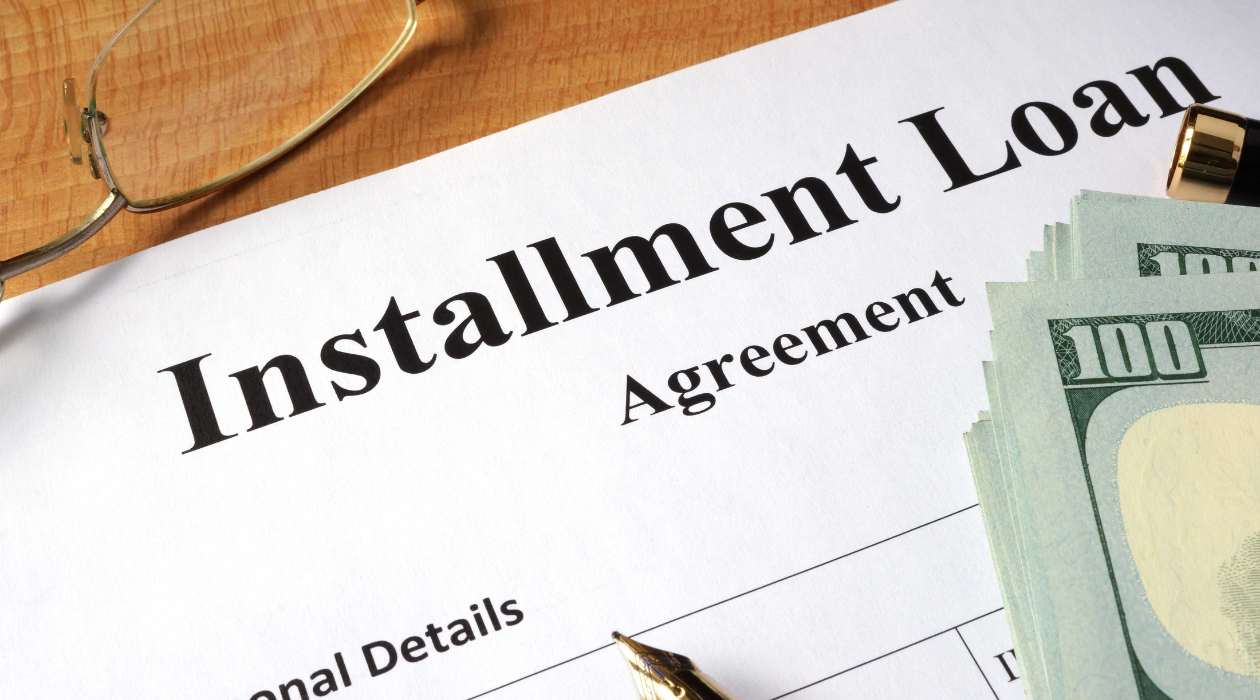Home>diy>Building & Construction>How Do Construction Loans Work?


Building & Construction
How Do Construction Loans Work?
Modified: January 9, 2024
Learn how construction loans work and finance your building construction projects. Understand the process, requirements, and financing options available.
(Many of the links in this article redirect to a specific reviewed product. Your purchase of these products through affiliate links helps to generate commission for Storables.com, at no extra cost. Learn more)
Introduction
Welcome to the world of construction loans – a financing option that plays a vital role in bringing buildings and structures to life. Whether you are looking to build your dream home, embark on a commercial development project, or renovate an existing property, understanding how construction loans work is essential.
Construction loans are a unique type of financing designed specifically for construction projects. They provide the necessary funds to cover the costs of building or renovating a property, including materials, labor, permits, and other expenses. Unlike traditional mortgages, which are based on the appraised value of a completed property, construction loans are based on the estimated cost of the project.
There are different types of construction loans available, each tailored to meet specific needs. The most common types include:
- Construction-to-Permanent Loans: These loans are designed to finance both the construction phase and the long-term mortgage for the completed property.
- Construction-Only Loans: As the name suggests, these loans cover only the costs associated with the construction phase and do not include a permanent mortgage.
- Renovation Loans: These loans are specifically for renovations and improvements on an existing property.
Obtaining a construction loan requires meeting certain eligibility criteria. Lenders typically consider factors such as the borrower’s creditworthiness, income stability, construction experience, and the viability of the project. Understanding key terms and concepts associated with construction loans, such as loan-to-cost ratio, loan-to-value ratio, and draw schedule, is crucial when navigating the application process.
In this article, we will provide a comprehensive guide to understanding how construction loans work. We will walk you through each step of the process, from preparing your construction plan and budget to finding a lender, going through the application and documentation process, and finally closing the loan. We will also discuss how construction loan funds are managed, how repayments work, and potential challenges and risks that come with construction loans.
By the end of this article, you will have a clear understanding of the ins and outs of construction loans, empowering you to make informed decisions and successfully navigate the exciting journey of building or renovating a property.
Key Takeaways:
- Construction loans are tailored financing options for building and renovating properties, with different types available such as construction-to-permanent loans, construction-only loans, and renovation loans. Understanding eligibility criteria and key terms is crucial for successful loan application.
- Effectively managing construction loan funds is essential for a smooth construction process, including adhering to draw schedules, monitoring project progress, and controlling costs. Careful planning and proactive decision-making help mitigate potential risks and challenges associated with construction loans.
Read more: How Do Construction Loans Work
Understanding Construction Loans
Before diving into the process of obtaining a construction loan, it is important to grasp the fundamentals. Let’s start by defining what construction loans are and exploring the different types available.
Definition of Construction Loans
A construction loan is a short-term loan that provides financing for the construction or renovation of a property. Unlike a traditional mortgage loan, which is used for purchasing an existing property, a construction loan is specifically designed to cover the costs associated with building or renovating a structure.
Types of Construction Loans
There are several types of construction loans available, each tailored to suit different financing needs. The three most common types include:
- Construction-to-Permanent Loans: These loans are the most popular option for financing construction projects. They provide funding for both the construction phase and the subsequent long-term mortgage. With this type of loan, borrowers have the convenience of securing their permanent financing upfront.
- Construction-Only Loans: As the name implies, construction-only loans cover the expenses related to the construction phase only. Borrowers must secure separate financing for the long-term mortgage once the construction is completed.
- Renovation Loans: Renovation loans are specifically designed for property owners looking to renovate or improve an existing structure. These loans provide the necessary funds to cover the costs of remodeling, repairs, or additions.
Eligibility Criteria for Construction Loans
Obtaining a construction loan requires meeting certain eligibility criteria. The exact requirements may vary among lenders, but common criteria include:
- Creditworthiness: Lenders will carefully evaluate your credit score and credit history to assess your ability to repay the loan.
- Income Stability: Demonstrating a stable source of income is crucial for securing a construction loan. Lenders want to ensure that you have the financial means to make monthly payments.
- Construction Experience: While not always a requirement, having experience in construction projects can positively impact your eligibility for a construction loan. Lenders may see it as a sign of your ability to manage the project successfully.
- Project Viability: Lenders will assess the feasibility and potential value of the construction project to determine if it is a worthwhile investment.
Read more: How Does A Construction Loan Work
Key Terms and Concepts
When dealing with construction loans, it is important to familiarize yourself with key terms and concepts that are commonly used in the industry:
- Loan-to-Cost Ratio (LTC): The loan-to-cost ratio is the percentage of the total project cost that the lender is willing to finance. For example, if the project cost is $500,000, and the lender offers an LTC ratio of 80%, they will provide a loan of $400,000.
- Loan-to-Value Ratio (LTV): The loan-to-value ratio represents the loan amount compared to the appraised value of the completed property. It is an essential factor in determining the borrower’s equity and the lender’s risk. A lower LTV ratio generally provides better loan terms.
- Draw Schedule: A draw schedule outlines the disbursement of funds throughout the construction process. It typically divides the loan amount into multiple stages or milestones, and the borrower receives funds as each stage is completed.
By understanding these key terms and concepts, you will be better equipped to navigate the construction loan process and communicate effectively with lenders.
Step-by-Step Process of Obtaining a Construction Loan
Now that you have a solid understanding of construction loans, let’s dive into the step-by-step process of obtaining one. Whether you’re building your dream home or undertaking a commercial construction project, these steps will guide you through the loan application and disbursement process.
1. Preparing Your Construction Plan and Budget
Before applying for a construction loan, you need to have a detailed plan and budget for your project. This includes architectural plans, blueprints, and a comprehensive list of materials, labor costs, permits, and other necessary expenses. It’s essential to have a realistic estimate of the project’s cost to determine the loan amount you will require.
2. Finding a Lender
Once your construction plan and budget are ready, it’s time to find a lender who specializes in construction loans. Research and compare different lenders to find one that offers competitive rates, terms, and experience in financing construction projects. You may consider reaching out to local banks, credit unions, or mortgage brokers who have a good track record in construction lending.
Read more: How Does A New Home Construction Loan Work
3. Application and Documentation Process
When you’ve chosen a lender, you’ll need to complete the application process. This typically involves filling out a loan application and providing documentation to support your eligibility. The required documents may include proof of income, credit history, construction plans, contractor agreements, cost estimates, and other financial statements.
It’s important to be thorough and organized during this step, ensuring that you provide all the necessary information and documents requested by the lender to avoid any delays in the loan approval process.
4. Loan Approval and Closing
Once the lender receives your application and supporting documents, they will review and evaluate your eligibility for the construction loan. This process may involve a credit check, verification of income, appraisal of the project, and assessment of your financial stability.
If your loan application is approved, the lender will provide you with a loan commitment letter that outlines the terms and conditions of the loan. You will then proceed to the loan closing stage, where legal documents are signed, and any associated fees or costs are paid.
5. Disbursement of Funds
After the loan closing, the funds will be disbursed to you or directly to the contractors and suppliers involved in the project. Disbursements typically occur in stages or milestones as outlined in the draw schedule.
Throughout the construction process, the lender will conduct inspections to monitor the progress and ensure that the project is being carried out as planned. They may require documentation and proof of completed work before releasing funds for the next stage.
It’s important to note that the loan disbursement process is subject to the terms and conditions established by the lender. Be sure to understand and adhere to these requirements to ensure a smooth flow of funds throughout the construction project.
By following these steps and being diligent throughout the process, you can successfully obtain a construction loan and turn your vision into a reality.
Managing Construction Loan Funds
Once you’ve obtained a construction loan, effectively managing the funds is crucial to ensure a smooth construction process and avoid financial pitfalls. Let’s explore some key aspects of managing construction loan funds.
Read more: How Do Home Renovation Loans Work
Construction Draw Process
The construction draw process is the method by which funds from the construction loan are disbursed to cover project expenses. It typically follows a predetermined draw schedule outlined in the loan agreement. The draw schedule divides the loan amount into stages or milestones, with funds released as each stage is completed.
When it’s time to request a draw, you will typically need to provide the lender with documentation to support the completion of a particular stage. This may include invoices from contractors and suppliers, proof of payments, or certifications from architects or engineers confirming the progress. The lender will review the documentation and release the approved funds accordingly.
It’s important to closely adhere to the draw schedule, ensuring that you request funds only when the specified stage is completed. This helps in maintaining control over the project’s budget and allows for effective monitoring of expenses.
Monitoring Project Progress
Monitoring the progress of your construction project is vital to ensure that it stays on track and aligns with the approved plans and timeline. Regular site visits and communication with the contractor and construction team can help you stay informed about the progress made and address any issues that may arise.
Regularly reviewing and comparing actual progress against the planned schedule allows you to identify potential delays or cost overruns. This proactive approach enables you to take corrective actions promptly, such as making necessary adjustments to the plan, addressing potential bottlenecks, or reallocating resources to keep the project on track.
Controlling Costs and Budgeting
Controlling costs and sticking to your budget is crucial when managing construction loan funds. Here are some tips to help you stay on top of your finances:
- Detailed Budgeting: Develop a comprehensive budget that clearly outlines all anticipated costs and expenses throughout the construction process. Be sure to include contingencies for unexpected expenses.
- Regular Cost Tracking: Track all project-related expenses meticulously, including invoices, receipts, and payments. Use accounting software or spreadsheets to maintain accurate records and monitor your spending.
- Cost Control Measures: Look for opportunities to reduce costs without sacrificing quality. This may involve obtaining multiple quotes from contractors and suppliers, negotiating prices, or exploring cost-effective alternatives for materials or design elements.
- Communication with Contractors: Maintain open lines of communication with your contractors and suppliers to prevent any surprise cost increases. Discuss potential change orders or variations in the scope of work and negotiate any associated costs upfront.
- Regular Financial Reviews: Periodically review your project’s financial status and compare it against your budget. This helps identify any budget deviations or areas where you may need to adjust your spending.
By proactively managing the construction loan funds, you can maintain financial control throughout the construction process, avoid budget overruns, and ensure the successful completion of your project.
Repaying a Construction Loan
Once the construction phase is complete and your property is ready for occupancy, it’s time to transition from the construction loan to a more permanent financing solution. Let’s explore the options for repaying a construction loan and transitioning to a long-term mortgage.
Conversion to a Permanent Loan
A common option for repaying a construction loan is to convert it into a permanent loan. This process involves refinancing the construction loan into a mortgage loan that will be used to repay the remaining balance. The terms of the permanent loan, such as the interest rate and repayment term, will be established during the conversion process.
Converting to a permanent loan provides several benefits. It eliminates the need to apply for a separate mortgage, streamlining the refinancing process. Additionally, it allows you to lock in a fixed interest rate for the long term, providing stability and predictability in your monthly mortgage payments.
Interest Payments during Construction
During the construction phase, you will be responsible for making interest payments on the funds disbursed from your construction loan. These payments typically cover only the interest portion of the loan amount and are known as “interest-only payments.”
The amount of interest you pay during the construction phase will depend on the interest rate and the duration of the construction process. It’s important to budget for these payments to ensure you have the necessary funds available.
Loan Repayment Options
When it comes to repaying a construction loan, you have several options available. Here are a few common repayment options:
- Principal and Interest Payments: Once your construction loan is converted to a permanent loan, you will begin making regular monthly payments that include both principal and interest. These payments are typically amortized over a specific term, such as 15 or 30 years.
- Interest-Only Payments: Some lenders offer the option to extend the interest-only payment period beyond the construction phase. During this time, you will only be required to make payments towards the interest portion of the loan. However, it’s important to note that interest-only payments may result in a higher overall cost of borrowing over the life of the loan.
- Balloon Payment: In some cases, borrowers may opt for a balloon payment option. With this repayment structure, you make regular monthly payments on a portion of the loan, and at the end of the loan term, a lump sum payment, known as the balloon payment, is due. It’s important to carefully consider your financial situation and ability to make the balloon payment before choosing this option.
- Refinancing: If desired, you can explore refinancing options in the future to potentially secure better terms or lower interest rates on your mortgage loan. Refinancing allows you to replace your existing loan with a new one, often resulting in reduced monthly payments or a shorter repayment term.
It’s important to discuss the various repayment options with your lender to determine the best approach based on your financial goals and circumstances.
Repaying a construction loan requires careful planning and consideration. By exploring the different repayment options and selecting the one that aligns with your financial needs, you can successfully transition your construction loan into a long-term financing solution.
Potential Challenges and Risks Associated with Construction Loans
While construction loans offer a valuable financing option for building and renovating properties, they also come with potential challenges and risks that borrowers should be aware of. Let’s explore some of the common risks associated with construction loans.
Read more: How Long Do Construction Loans Last
Delays in Construction
One of the significant risks in construction projects is the potential for delays. Delays can occur due to a variety of factors, such as unfavorable weather conditions, labor shortages, or unexpected issues uncovered during the construction process.
Delays can have significant financial implications, as they may require an extension of the loan term or additional funds to cover ongoing expenses. It’s crucial to work closely with your contractors and have contingency plans in place to mitigate the impact of potential delays.
Cost Overruns
Construction projects are notorious for exceeding their initial budget estimates. Unforeseen circumstances, changes in materials or labor costs, or design modifications can all contribute to cost overruns.
To mitigate the risk of cost overruns, it’s essential to have a detailed budget and build in contingencies for unexpected expenses. Regularly tracking and reviewing project costs can help identify potential issues early on, allowing for adjustments and proactive measures to keep the project within budget.
Change Orders
During the construction phase, you may encounter situations where changes or modifications need to be made to the initial plans or specifications. These changes, known as change orders, can impact the project’s timeline and budget.
Change orders may arise due to design revisions, unforeseen challenges discovered during construction, or evolving needs and preferences. It’s important to closely manage change orders and carefully consider their potential impact on the project’s overall cost and timeline before proceeding.
Default and Foreclosure Risks
Just like any other loan, defaulting on a construction loan can have severe consequences. If you fail to make timely payments or are unable to complete the project as planned, the lender may declare the loan in default. Defaulting on a construction loan can lead to foreclosure, where the lender takes ownership of the property to recover their investment.
To mitigate the risk of default and foreclosure, it’s crucial to have a solid financial plan in place, ensure sufficient cash flow to cover loan payments, and work closely with experienced professionals throughout the construction process. Maintaining open lines of communication with the lender and reporting any challenges or issues as soon as they arise is also key to managing these risks.
It’s important to understand and plan for these potential challenges and risks when considering a construction loan. By being prepared and proactive, you can navigate the construction process more effectively and mitigate potential risks along the way.
Conclusion
Construction loans play a vital role in bringing building projects to life, whether it’s building a dream home or undertaking a commercial development. Understanding how construction loans work is essential for anyone venturing into the world of construction and renovation.
In this comprehensive guide, we have covered the key aspects of construction loans, from understanding their definition and various types to exploring eligibility criteria and important terms and concepts. We walked through the step-by-step process of obtaining a construction loan, including preparing your construction plan, finding a lender, completing the application and documentation process, obtaining loan approval, and the disbursement of funds.
Managing construction loan funds is a critical aspect of the construction process. We discussed the construction draw process, the importance of monitoring project progress, and the significance of controlling costs and budgeting. Careful financial management ensures that funds are used effectively and minimizes potential risks and delays.
Repaying a construction loan involves options such as converting to a permanent loan, making interest payments during construction, and selecting appropriate repayment structures. It’s important to choose the repayment option that aligns with your financial goals and circumstances, ensuring a smooth transition from construction to permanent financing.
Lastly, we explored potential challenges and risks associated with construction loans, including delays in construction, cost overruns, change orders, and default and foreclosure risks. By understanding and anticipating these risks, borrowers can effectively mitigate them through careful planning, open communication, and proactive decision-making.
In conclusion, construction loans provide the necessary financial support for building and renovating properties. By understanding the process, managing funds wisely, and being aware of potential challenges, borrowers can navigate the world of construction loans with confidence. Working closely with experienced professionals and maintaining open lines of communication with lenders will help ensure the successful completion of your construction project while mitigating risks along the way.
Frequently Asked Questions about How Do Construction Loans Work?
Was this page helpful?
At Storables.com, we guarantee accurate and reliable information. Our content, validated by Expert Board Contributors, is crafted following stringent Editorial Policies. We're committed to providing you with well-researched, expert-backed insights for all your informational needs.










0 thoughts on “How Do Construction Loans Work?”